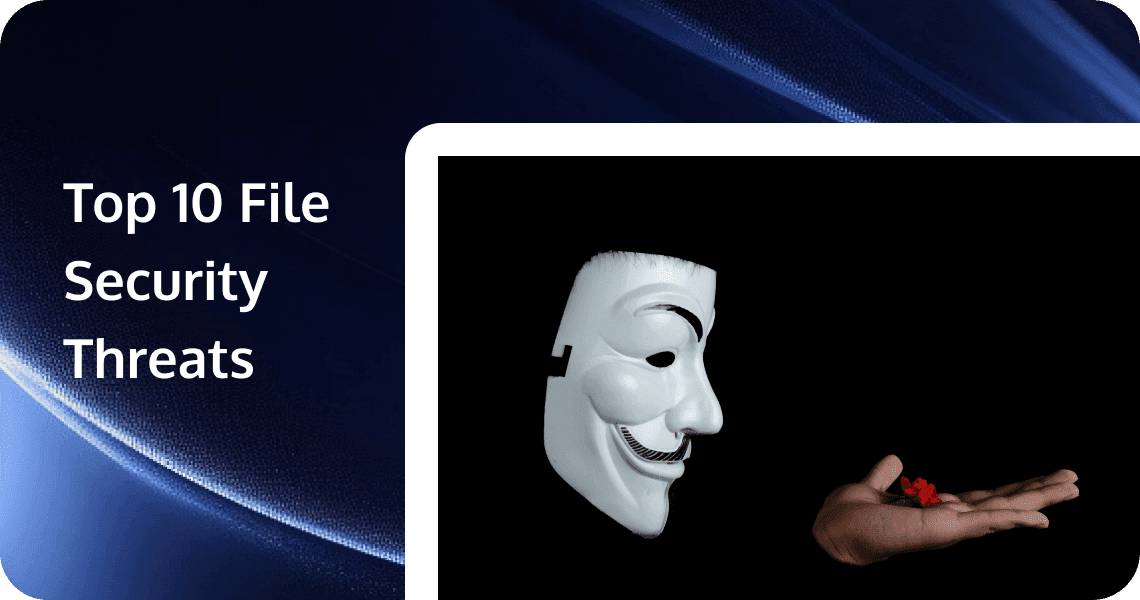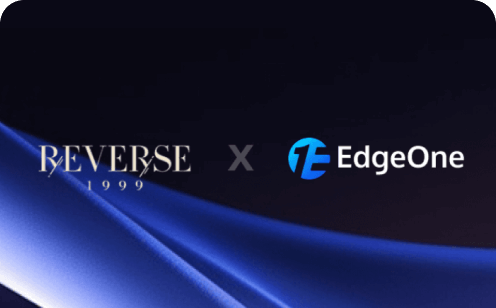Top 10 File Security Threats in 2025: Protecting Your Critical Data Assets

In today's digital landscape, file security is crucial for protecting sensitive information. Whether you are an individual managing personal data or a business handling proprietary information, the importance of safeguarding files cannot be overstated. With the increasing sophistication of cyber threats, it is essential to understand the risks and take proactive measures to protect your data. This article delves into the top 10 file security threats, providing insights on how to identify and mitigate these risks to safeguard your data.
1. Phishing
Phishing is one of the most common and effective methods used by cybercriminals to gain unauthorized access to sensitive information. Phishing attacks often involve sending deceptive emails that appear to be from legitimate sources, tricking users into clicking on malicious links or providing personal information. Common techniques include spear phishing, which targets specific individuals, and pretexting, where attackers create a false scenario to manipulate users.
- Impact on File Security: Phishing can lead to unauthorized access to sensitive files stored on your devices or cloud services. Once attackers gain access, they can steal, alter, or delete critical data.
- Prevention Strategies: Employee training is crucial in recognizing phishing attempts. Implementing email filtering systems can help block suspicious emails before they reach users. Multi-factor authentication (MFA) adds an extra layer of security, making it more difficult for attackers to access your files even if they obtain your login credentials.
2. Malware
Malware, short for malicious software, is a broad term that encompasses various types of harmful programs designed to disrupt, damage, or gain unauthorized access to computer systems. Common types of malware include viruses, worms, and Trojans.
- Impact on File Security: Malware can compromise file integrity by corrupting or deleting files. It can also steal sensitive information by monitoring user activities and accessing files without permission.
- Protective Measures: Installing and regularly updating antivirus software is essential. Firewalls can help block unauthorized access to your network. Users should also exercise caution when downloading files or clicking on links, especially from unknown sources.
3. Ransomware
Ransomware is a type of malware that encrypts files on a victim's device, making them inaccessible until a ransom is paid. Attackers typically demand payment in cryptocurrency, making it difficult to trace the transaction.
- Impact on File Security: Ransomware can lock you out of your own files, causing significant disruption to your operations. Paying the ransom does not guarantee that you will regain access to your files, and it may encourage further attacks.
- Prevention Tips: Regularly back up your files to a secure location, ensuring that you can restore them if necessary. Use strong anti-malware software to detect and block ransomware attempts. Restrict access to critical files and systems to minimize the impact of an attack.
4. Zero-Day Vulnerabilities
Zero-day vulnerabilities refer to software flaws that are unknown to the developers and the security community. These vulnerabilities can be exploited by attackers before patches are available, making them particularly dangerous.
- Impact on File Security: Attackers can use zero-day vulnerabilities to gain unauthorized access to your files and systems, often without detection.
- Importance of Keeping Software Up-to-Date: Regularly updating your software ensures that you have the latest security patches. Using advanced detection systems can help identify and mitigate zero-day attacks before they cause significant damage.
5. Insider Threats
Insider threats involve individuals within an organization who misuse their access privileges to harm the organization's data or systems. These threats can be intentional, such as disgruntled employees, or accidental, such as employees falling for phishing scams.
- Impact on File Security: Insider threats can lead to unauthorized access, modification, or deletion of sensitive files. They can also result in data breaches that expose confidential information.
- Mitigation Strategies: Implement strict access controls to limit who can access sensitive files. Monitor user activity to detect any unusual behavior. Fostering a positive company culture can also help reduce the likelihood of intentional insider threats.
6. Supply Chain Attacks
Supply chain attacks occur when attackers target third-party vendors to gain access to their clients' systems and files. By compromising a vendor's software or infrastructure, attackers can infiltrate the systems of multiple organizations.
- Impact on File Security: Supply chain attacks can lead to widespread data breaches as attackers gain access to multiple organizations through a single compromised vendor.
- Preventive Measures: Conduct thorough due diligence on your vendors to ensure they have robust security measures in place. Implementing supply chain security systems can help detect and mitigate potential threats.
7. DoS and DDoS Attacks
Denial of Service (DoS) and Distributed Denial of Service (DDoS) attacks involve overwhelming a system with traffic, making it unavailable to users. These attacks can disrupt access to files and systems, causing significant downtime and financial losses.
- Impact on File Security: While these attacks do not directly steal or alter files, they can make your systems inaccessible, leading to data unavailability and potential loss.
- Strategies for Detection and Mitigation: Network monitoring tools can help detect unusual traffic patterns. Capacity planning and implementing robust network infrastructure can help mitigate the impact of these attacks.
8. Drive-by Download Attacks
Drive-by download attacks occur when malicious code is automatically downloaded to a user's device without their consent. This can happen when users visit compromised websites or click on malicious links.
- Impact on File Security: Drive-by downloads can install malware that compromises file security, leading to data theft or corruption.
- Prevention Methods: Regularly update your software and operating system to patch vulnerabilities. Avoid visiting insecure websites and be cautious when clicking on links, especially from unknown sources.
9. Advanced Persistent Threats (APTs)
APTs are sophisticated, long-term attacks carried out by skilled attackers who gain unauthorized access to a network and remain undetected for extended periods. These attackers often have specific targets and objectives, such as stealing sensitive information or disrupting critical infrastructure.
- Impact on File Security: APTs can lead to significant data breaches, as attackers have ample time to explore and exploit vulnerabilities within a system.
- Detection and Defense Strategies: Monitoring for anomalies in network traffic and user behavior can help detect APTs. Deploying advanced firewalls and intrusion detection systems can also provide an additional layer of protection.
10. Unsecured File Sharing and Cloud Storage
Unsecured File Sharing and Cloud Storage is a significant threat that often goes overlooked. In today's collaborative work environment, file sharing and cloud storage solutions are indispensable. However, improper configuration and lack of security measures can expose sensitive information to unauthorized access.
- Impact on File Security: Unsecured file sharing can lead to data leaks, where sensitive files are accessible to unintended recipients. Cloud storage misconfigurations can expose entire databases or folders to the public internet, making them vulnerable to cyberattacks.
- Prevention Strategies: Always use secure file-sharing platforms that offer encryption and access controls. For cloud storage, ensure that permissions are set correctly to restrict access to authorized users only. Regularly audit your cloud storage settings to identify and fix any misconfigurations. Implementing two-factor authentication (2FA) for accessing cloud services can also add an extra layer of security, preventing unauthorized access even if credentials are compromised.
By addressing the threat of unsecured file sharing and cloud storage, you can significantly enhance the overall security posture of your files and systems.
How to Protect Your Data with Tencent EdgeOne
Tencent EdgeOne is an integrated edge computing platform that combines content delivery, security, and edge computing capabilities into a unified service designed to protect organizational data. Built on Tencent Cloud's global infrastructure, EdgeOne provides comprehensive protection for web applications, APIs, and digital content while simultaneously improving performance. By routing traffic through Tencent's secure network, organizations can defend against various cyber threats without sacrificing user experience or adding complex management overhead.
FileFileTencent EdgeOne provides comprehensive data protection through its integrated edge computing platform:
- DDoS Protection: Guards against distributed denial-of-service attacks using Tencent's global infrastructure
- Web Application Firewall (WAF): Defends against OWASP Top 10 vulnerabilities, including SQL injection and XSS
- Zero Trust Security: Implements identity-aware access controls and continuous authentication
- Global Threat Intelligence: Automatically blocks known malicious IPs and emerging threats
- Data Loss Prevention: Inspects and masks sensitive information to prevent data leakage
- Unified Management: Simplifies security through a single dashboard for monitoring and configuration
- Performance Optimization: Processes security checks at the edge to reduce latency while maintaining protection
Sign up and start a free trial with us!
Conclusion
File security is a critical aspect of cybersecurity in today's digital world. Understanding the top 10 file security threats and taking proactive measures to mitigate them is essential for protecting your sensitive information. By staying informed and vigilant, you can significantly reduce the risk of falling victim to these threats. Implementing robust security measures, such as employee training, regular updates, and advanced detection systems, can help safeguard your files and ensure the integrity and availability of your data.

